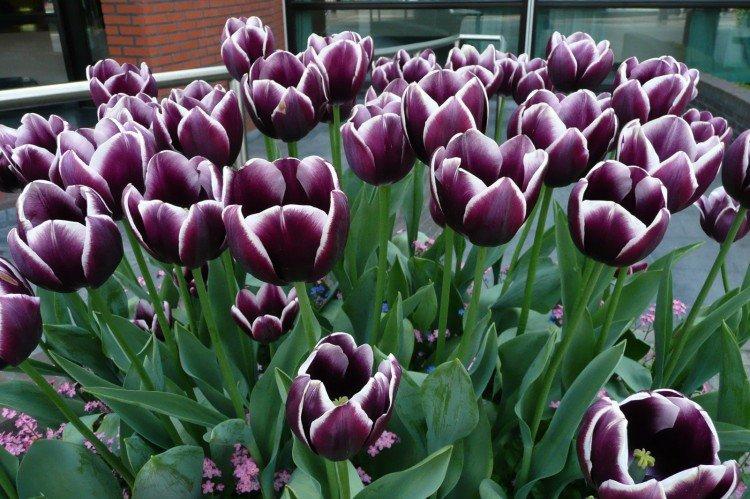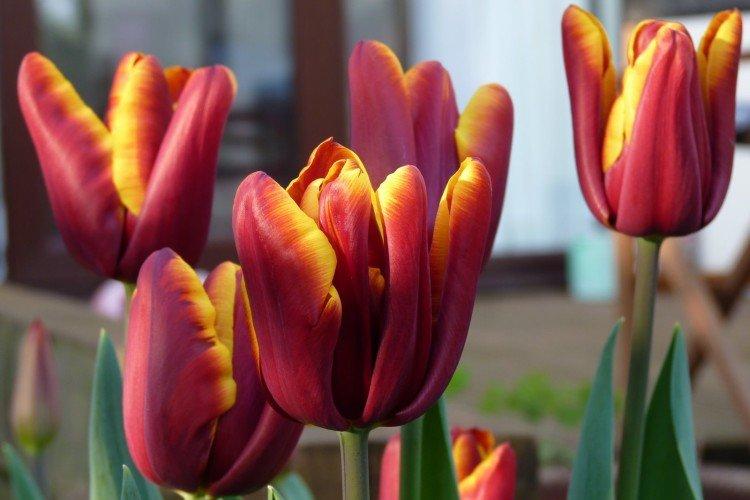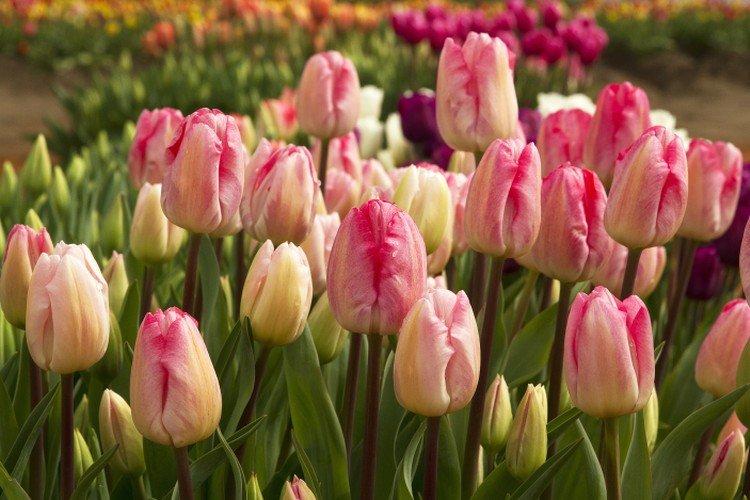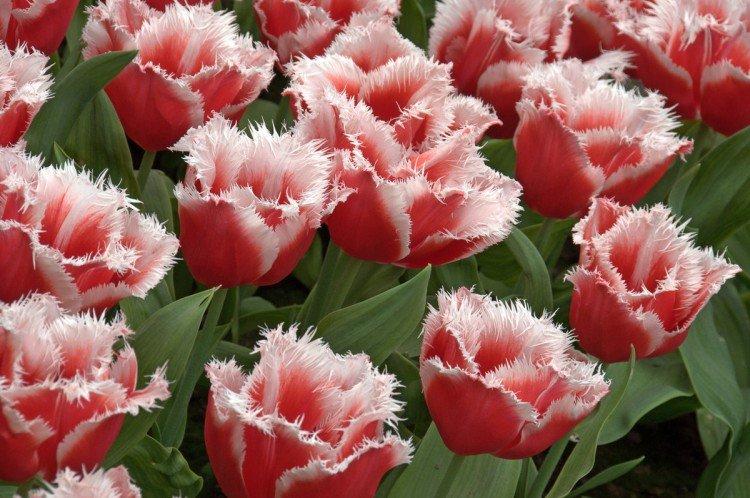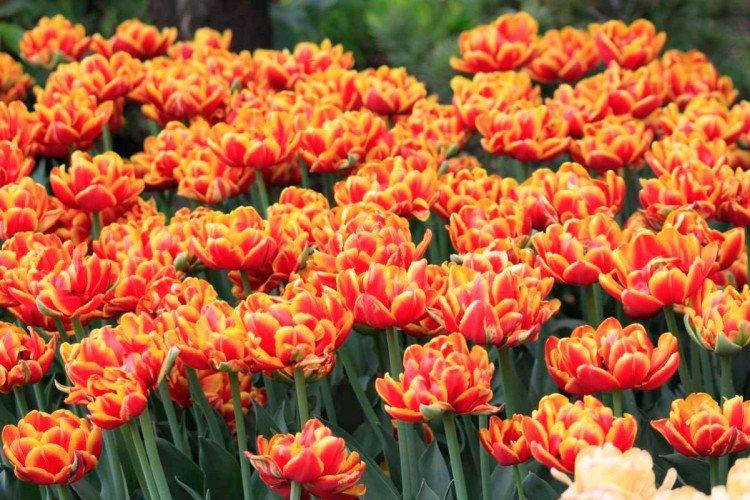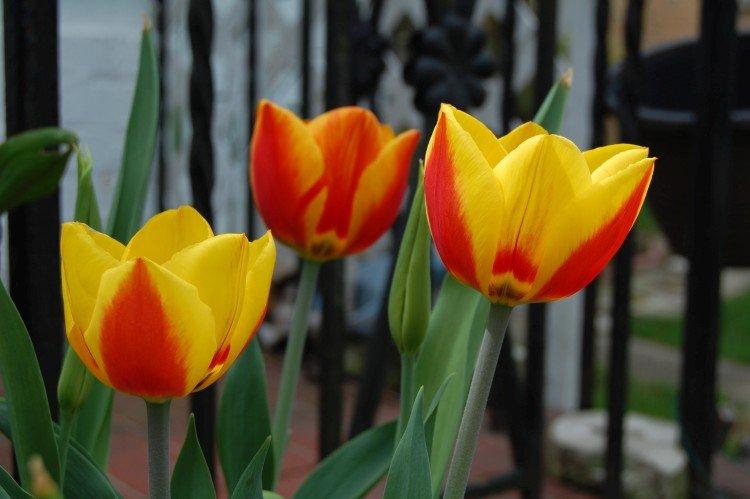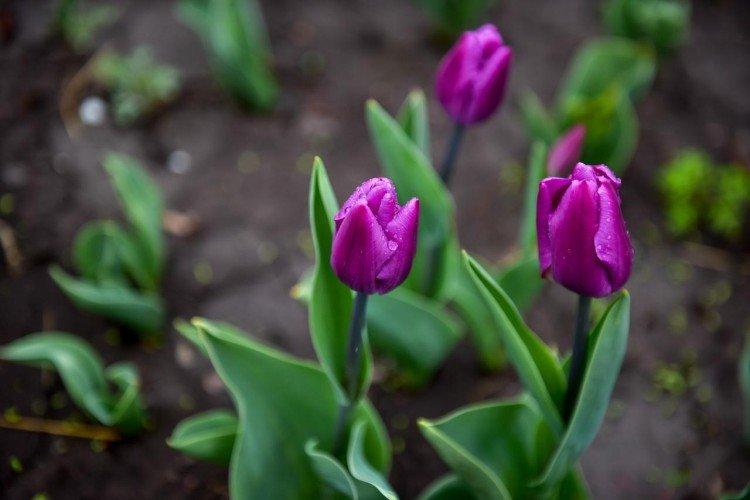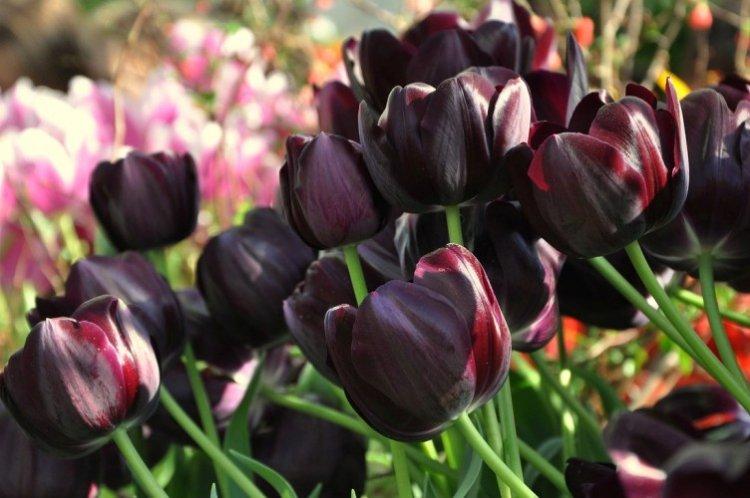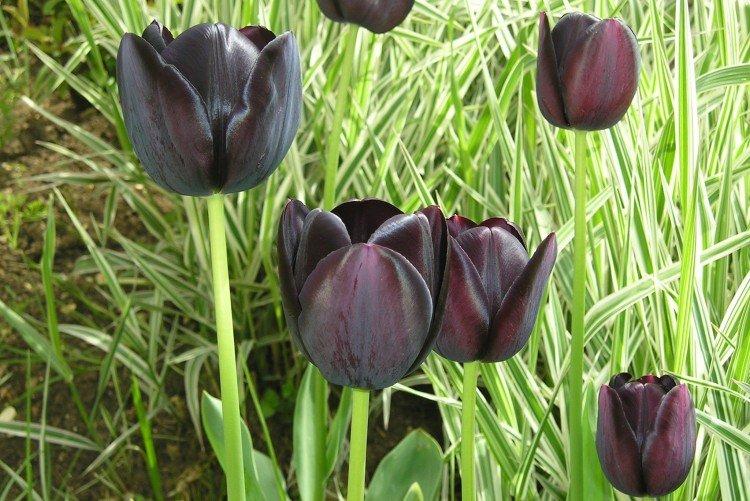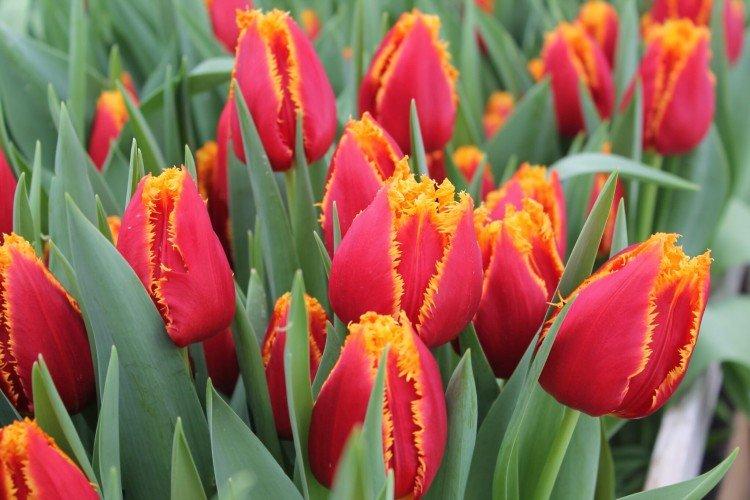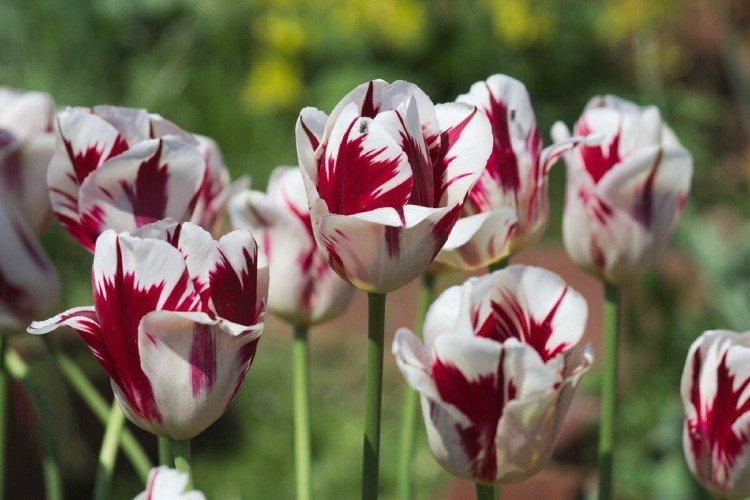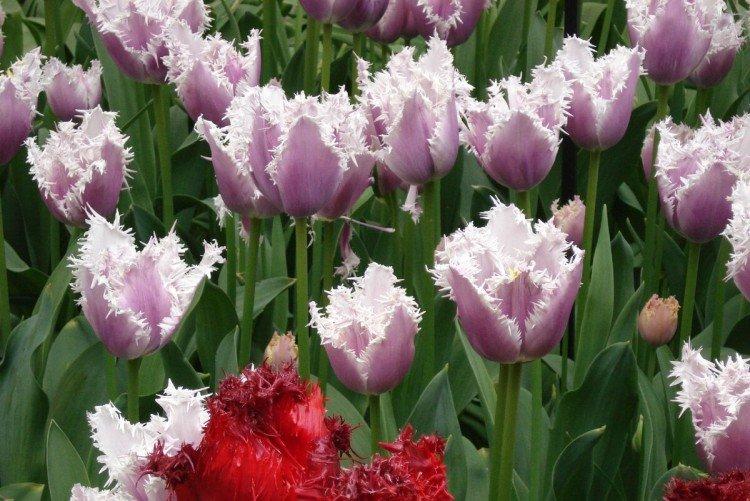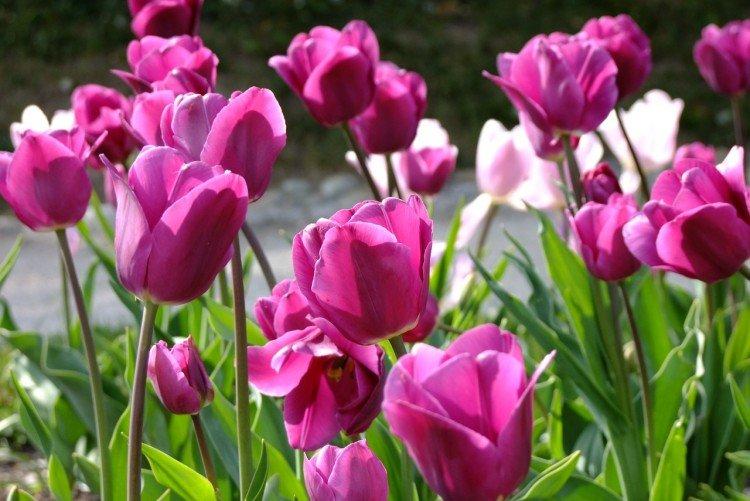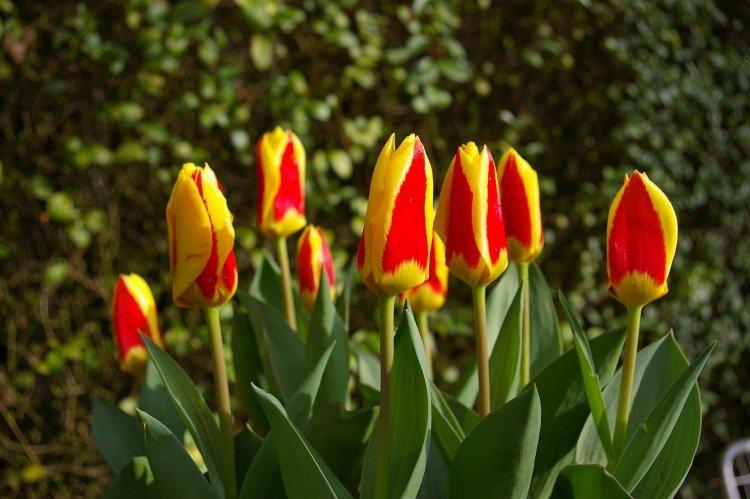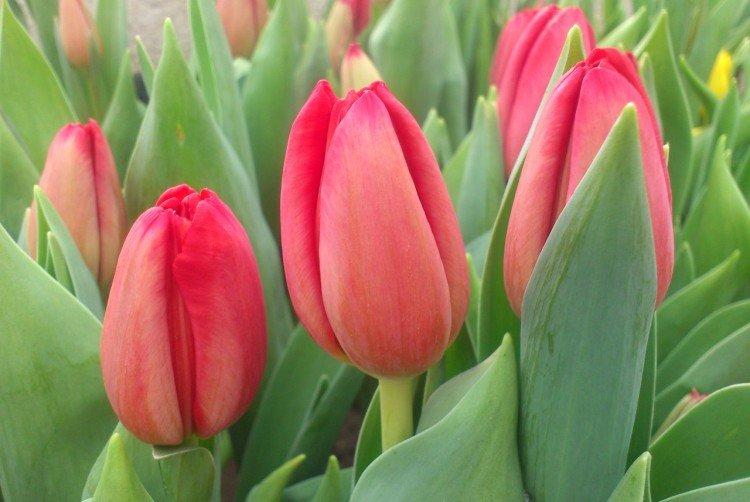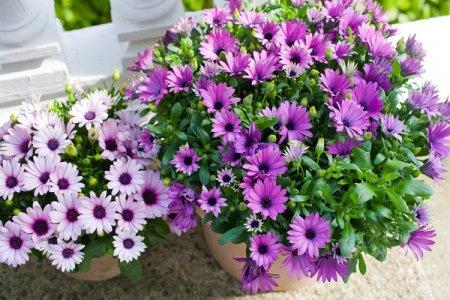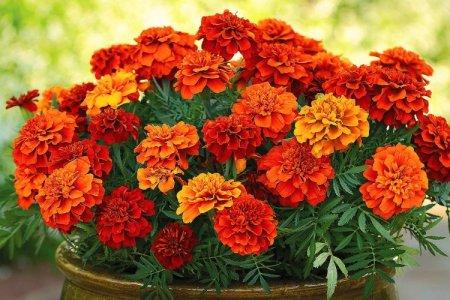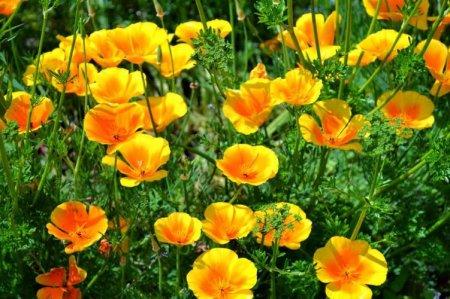
Is there anyone in the world who is completely indifferent to tulips? There are so many of them, and they are all so different that it seems that you can satisfy every taste. But how to properly grow and care for them is another question. But we know the answer to it too!
general information
Tulips have been in Europe for over 500 years. Since then, there have been several waves of true tulip fever, which especially affected the Netherlands, France and Italy. Thanks to this excitement, hundreds of the most incredible varieties and hybrids that we can admire today have appeared.
Tulips are a bulbous perennial that belongs to lily plants. They are grown both in gardens and on an industrial scale around the world. Depending on the variety, the height of the stems ranges from 10 cm to 1 m.
Each year, new roots form on the bulb, which die off at the end of the season. Sharp elongated leaves adjoin an even, straight stem, which gradually become smaller from bottom to top. Peduncles are crowned with one large bud. Shape, color, size - it all completely depends on the variety.

Types of tulips
Is it possible to enumerate all varieties of tulips in one selection? Of course not, a few are not enough. Therefore, we decided to start from the base, and chose the most popular categories that will help you at least determine your preferences!
Simple tulips
They are short, up to 40 cm, with strong and sturdy peduncles and simple glass-shaped buds. They can be grown on site, in flower beds and borders, or in containers. They are early and late, the later ones are usually larger.

Terry tulips
They have more lush and voluminous buds, which, when opened, can reach up to 8 cm in diameter. And this despite the fact that early double tulips are also low - up to 30 cm. But there are also late varieties.

Fringed tulips
These are tulips with fringed petals. They are tall, up to 80 cm, and in almost any possible shade - from white to purple. The flowering time depends on the specific variety.
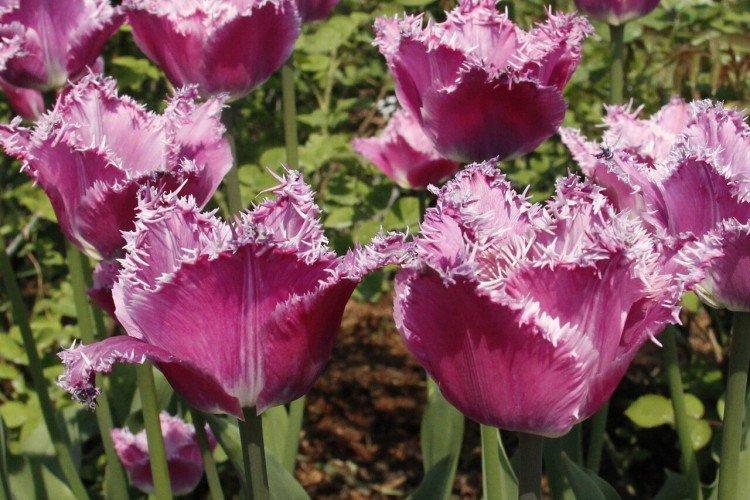
Darwin's tulips
These are tall hybrids up to 80 cm with large flowers up to 10 cm in diameter. They bloom later, by May, and are mainly red and pink varieties.

Rembrandt
All variegated varieties with spectacular strokes and strokes on the petals were collected in this variety. It is important not to confuse the peculiarity of the variety with the variegation virus, which we will discuss further.
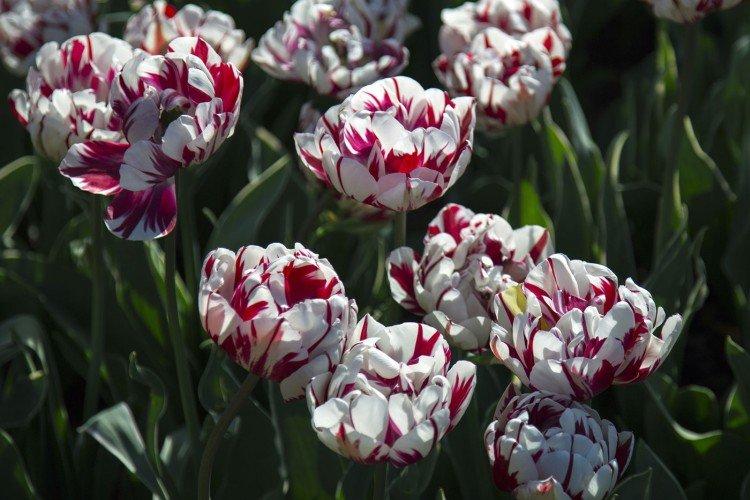
Lily tulips
They got their name for the unusual shape of the flowers: the pointed ends of the petals are bent outward. The average height is 60 cm, and flowering occurs by the end of May.
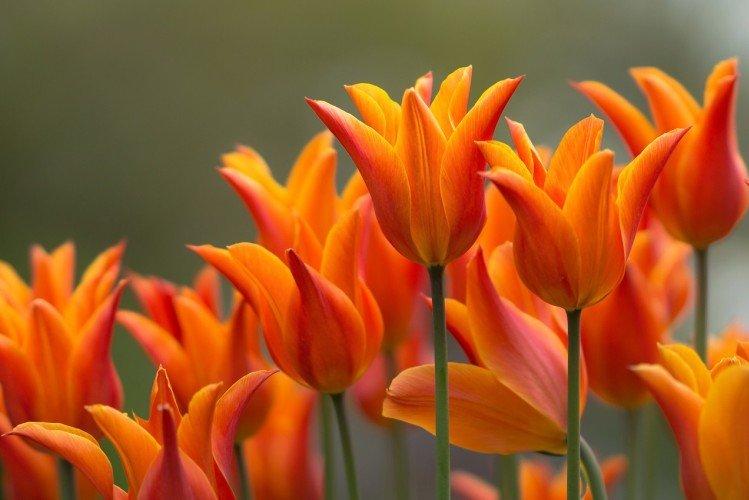
Green tulips
The middle of each petal is green, and gradually this green spot turns into the main shade. Most often - in white, yellow, red or pink.

Parrot tulips
A very showy and decorative look with whimsical embossed and fantasy petals. The buds of some varieties, when opened, reach up to 20 cm in diameter.
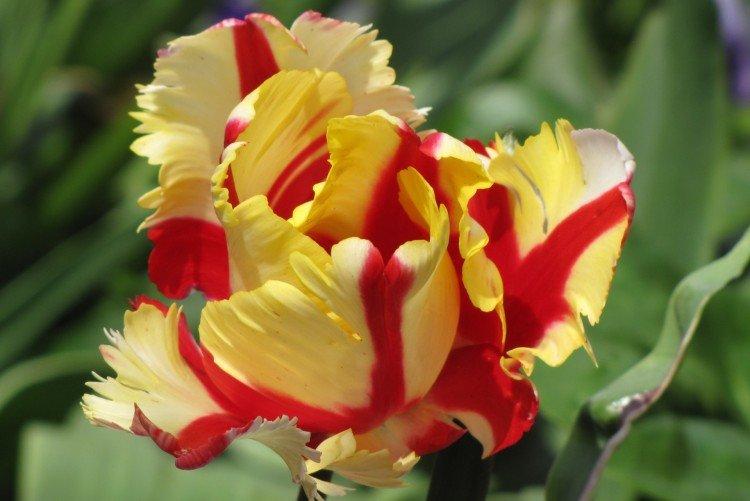
Tulip care
Tulips are not too difficult to care for, but this applies to already grown plants. The biggest challenge is ensuring that the bulbs are stored correctly and forcibly distilled correctly.
Temperature and lighting
Most varieties require stable ambient light and the same stable temperature. If it drops below +9 degrees, the color may be uneven. With a lack of light, the stems grow deformed, and the flowers are small.

Watering
Tulips love moisture very much, so they need to be watered more often. But do not let the water stagnate, because this almost inevitably leads to rotting of delicate bulbs. Do not get water on leaves and flowers and do not allow the soil to dry out. Ideally, water the seedlings through grooves along the rows rather than directly under the bushes.
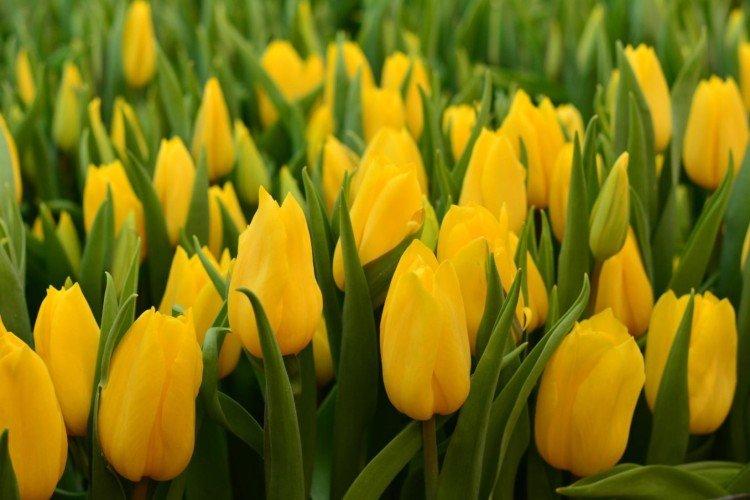
The soil
The soil should be dry and loose, without stagnant water. Too dense soil is advised to loosen with peat, vermiculite or sand. It is impossible for other bulbs to grow in front of the tulips on this site. Be sure to take care of good drainage.

Fertilizers and feeding
Top dressing is applied to the ground when planting the bulbs. In the spring, you can use liquid complex fertilizers while watering. Weak stems indicate a lack of nitrogen, and small buds indicate a lack of potassium and phosphorus.
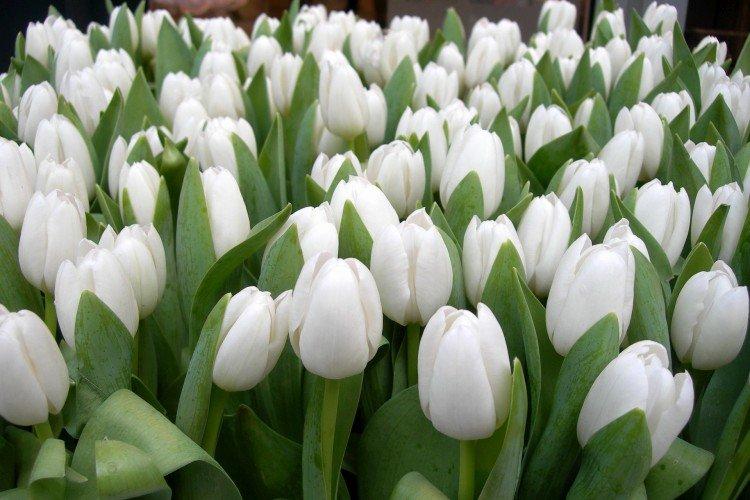
Hilling
Thin stems of tulips may not support the weight of large flowers. So that they do not droop and stand better, we recommend to huddle them higher. Moreover, it helps from washing out the bulbs during rains.

Storing tulip bulbs
After flowering, cut off the stalks and most of the leaves, leaving a couple of the strongest ones. In May-June, and later varieties - a little later, the bulbs can be dug up. It will take about 1.5 weeks to dry, and then carefully sort them out, peel them, undress the children and send the bulbs for storage in a cool, dry and dark place.

Planting and breeding
Tulips are planted in autumn, when the soil temperature drops to 9-10 degrees. Before frost, the bulbs will have time to get stronger and take root. The optimum depth is about 3 bulb diameters - this is about 15 cm on average. The smaller the bulb, the smaller it is.
The distance between the holes is at least 10 cm, but this also depends on the size. To create a beautiful group planting, tulips are simply planted in common trenches. Before planting, be sure to clean the bulbs from scales and mordants.
Sprinkle the bulbs in the holes with ash and sand, and then soil. Tulips cannot be planted in the old place for at least 4 years due to bulb infections. After frost, mulch the flower bed with peat, and do not remove it in the spring. Then nature will do everything herself.
There is a practice of spring planting, but in reality it is ineffective. Before planting, the bulbs are left overnight in the refrigerator and soaked in potassium permanganate for half an hour. The further landing principle is the same.
The same bulbs are used for propagation. During the season, lateral shoots form on them, on which small daughter bulbs are formed. When they get stronger, they can simply be separated.
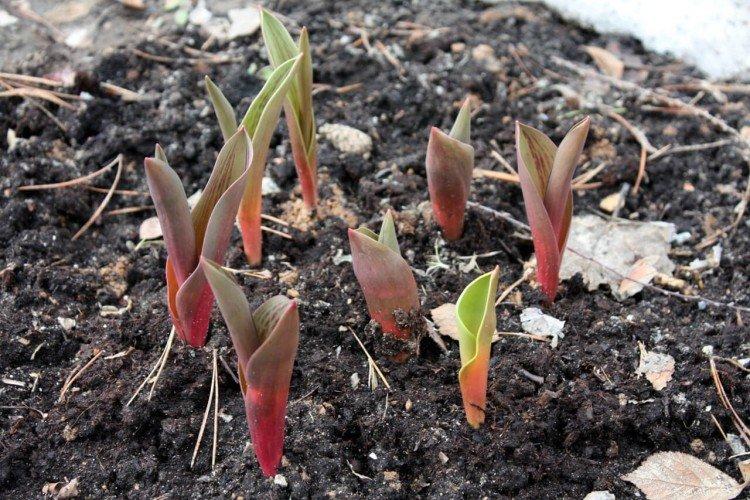
Pest and disease control
Most often tulips suffer from bulbs. This is almost a dozen varieties of fungi and rot with a wide variety of manifestations. But they can always be identified by the appearance of spots, neoplasms, deformation and degradation of the rhizome. Gradually, the problem spreads to the stem and to all parts of the plant.
The methods of prevention and treatment are the same. Carefully select the planting material, disinfect the bulbs and soil according to the instructions, sort out the bulbs every season and ruthlessly get rid of everything suspicious. It is better to destroy diseased plants, and all others should be prophylactically treated with fungicides.
One of the oldest and most common tulip diseases is variegation. At first it seems that this is just an unusual variety with multi-colored petals. But gradually the plant degenerates, and all this time it spreads the virus around. Most often, it is transmitted with the sap of diseased plants through insects.
There is no cure for flower viruses, so only prevention helps. In particular, the destruction of diseased flowers with a bulb, disinfection of the ground and adherence to the neighborhood in the flower bed. For example, don't plant tulips with or after lilies.
The gum flow of the bulbs is provoked by an overabundance of light. Hardening and discoloration is a symptom of calcareous disease. All this is due to improper storage and planting.
The most dangerous pests are wireworms and root mites, which destroy various bulbous and tuberous inflorescences. They hide between the scales, and that is why you should always inspect the planting material. Affected bulbs are soaked in hot water and chemicals and then planted separately.
There are also bears, scoops, aphids, bulb flies, snails and slugs. It is easier to immediately take a set of preventive measures in the form of insecticide treatment.

Tulips - photo
Bouquets, flower beds, small islands and whole fields of tulips - what could be better in spring? Just look at this multi-colored ocean of the most delicate buds!
